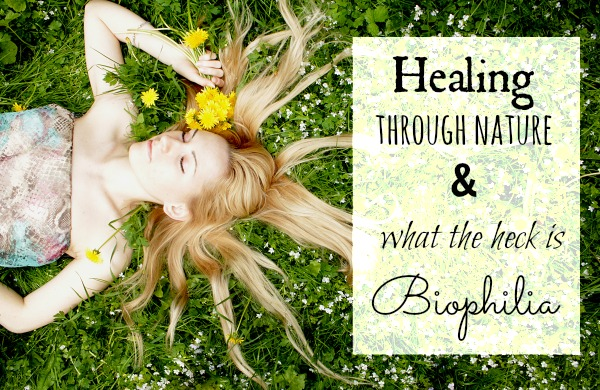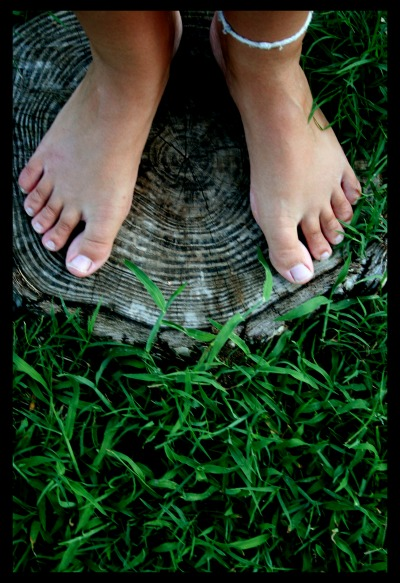
Mother Nature is a gift to mankind.
It’s a gift we are so blessed to have.
It’s one that has the potential to heal. A gift that is forgiving. One that can bring a sense of ‘zen’ to life. One that human creations pale in comparison to.
When we carelessly destroy, exploit and stomp the hell all over it with our burdensome carbon footprints, we are in essence, damaging the tie between Mother Nature and Man.
Think of it this way.
Without nature, we as humans, would be an extinct species.
Nature as a whole, does not need us. We need it.
If humans were to suddenly disappear from this planet, nature would go on living. It would continue doing what it has always done looooong before human intervention came into play. It can self-sustain itself. As humans, we can’t do this. We rely on external ecosystems to sustain us.
So with this in mind, how can we justify our treatment of this planet?
We litter, we pollute, we demolish, we strip the land bare.
When we stop viewing the world as simply an infinite supply of resources solely for our benefit and here to serve us, but rather, redirect our line of thought to what we can do for the world and considering everything here as being finite, we open ourselves up to a whole new way of living.
The moment we relinquish the idea that this planet is ours to conquer and manipulate, we submit to the idea that maybe, just maybe, there is a purpose that lies outside of our own understanding.
Am I sounding like a complete hippie nutcase yet? <– (I’m not denying that maybe I am)
Still with me?
Lets take a step back then, shall we?
Have you ever had one of those really stressful days where you could punch a hole through the plastered wall, scream at the top of your lungs or smash a few plates as though you were partying at a Greek wedding, except that you’re not and you blame it on that darn oven burning your slice to the crisp? Or is that just me?
Amongst the kerfuffle of the mess, you somehow manage to take a deep breath and spontaneously, step outside. To simply, go for a walk. Suddenly, you’re breathing in the fresh air, smelling the aromas of the flowers and listening to the multitude of birds tweeting. A wave of calm sweeps over you.
Think about those times you’ve walked through a forest, swam in the ocean or reached the peak of a mountain after a long hike. Unless you have a complete and utter phobia of heights, did you not feel the serene landscape just melt your heart?
Quite simply, when we spend time in nature, we most certainly, more often than not, enjoy a sense of calm, peace and connection to the earth.
This my friends, is the power of nature.
It’s in our genetic makeup, part of our memory response; our human instinct if you will, to be in connection with nature.
This is what’s referred to as Biophilia. Not a phobia which would see to you be freaking out in fear of something. Rather, a philia, that is, a strong love and admiration for something.
The Biophilia Hypothesis was first brought to us by Edward O. Wilson in his 1984 book whereby he describes it as, “the urge to affiliate with other forms of life”.
This idea helps to explain why we squeal at the sight of little puppies and kittens, why a bunch of roses makes a girl’s heart melt, why little old ladies tend to their flower beds relentlessly and why my dad is so freaking obsessed with tending to his lawn.
Our human instincts are entwined with nature and have been from the start of time. From the simple flowering of a plant that reminds us it’s Spring and which plants are worth seeding for our next crop; to the distinct smells of certain herbs that bring about memories of roast dinners; to the adorable face of that little puppy once again that turns a person into a pile of mushy peas to the point that suddenly they would even risk their own lives to save it if its life was indeed at risk!
So is it no wonder that this invisible thread that links us to nature is one that has the potential to HEAL us?
We can’t deny that in some way, shape or form, we all sense a need to connect with nature. We seek its healing.
There are examples of biophilia healing already occurring around us. Animal therapy and plant therapy are both activities that are commonly practiced in nursing homes. It gives the elderly an opportunity to connect with this biophilic instinct if bound to an otherwise, bleak existence indoors. Visitors send hospital patients flowers in the hope of lifting their spirits or a depression.
Just the thought of a sunny day brings with it the hope of exciting activities. Whether they actually come to fruition is another whole matter but that mere thought even lifts my spirit.
Spending time in nature is so crucial for one’s mental, physical, emotional and spiritual health and wellbeing.
From the rays of the sun that provide us with Vitamin D and warmth, to the soothing waters of the ocean and the comfort of a soft patch of grass to lie on. The peaceful bliss of hearing birds tweet of an early morning to signal the arrival of a new day or the sound of creaking crickets amidst the stillness of the night that reminds us that yes, life goes on, even whilst we sleep.
A Norwegian study concluded that an environment devoid in nature has a negative impact on one’s health and wellbeing. Does it not make sense then that more companies should be filling their office and desks with indoor plants if they wish to boost employees’ moods and productivity? That more cities should be adorned with trees and green parks to encourage its citizens to care for the upkeep of its streets and to get outdoors and be active? And that more schools should be incorporating opportunities for students to learn and interact outdoors in order to encourage a sense of pride in the natural world and to boost their rate of learning?
Knowing all this, we should all be actively looking for ways to incorporate more opportunities to be in nature on a daily bases.
Here are some more ideas to get you amongst this Biophilia action:
- Adorn your home with indoor pot plants

- Walk barefoot outside to connect with the ground
- Invest in a mini indoor aquaponics set up like this one (that one is an affiliate link). It makes a great gift idea!
- Get out and garden or participate in community gardening initiatives
- Run around outdoors with your pets (dogs being the obvious choice here)
- Sign up to volunteer at an animal shelter
- Volunteer in nature conservation projects around your area
- Go hiking in nature on the weekend
- Visit the beach more often
- Exercise outdoors – don’t confine yourself to the prison walls of a gym!
- Picnic outside or enjoy outdoor barbeque dinners with family and friends more often
- Simply sit in a park and read a book or meditate
Look for, and take advantage of, as many opportunities to get outside. Make an effort to do it each day. If you can’t get outside, then bring the outside in. It’s something that is not only FREE, but readily available to everyone. Nature doesn’t judge. It’s also forgiving. How can you not love something so innocent?
How do you spend your time outdoors? What’s been your most memorable biophilia moment?
style=”display:inline-block;width:468px;height:60px”
data-ad-client=”ca-pub-8113498808422183″
data-ad-slot=”7969644087″>
© 2013 The Urban Ecolife. You’re welcome to pin my posts but please reframe from reposting full recipes or posts to any other website. That’s just not cool bro.
STANDARD FTC DISCLOSURE: In order for me to support my blogging activities, I may receive a few dollars here and there or other types of remuneration for my endorsement, recommendation, testimonial and/or link to any products or services from this blog. Please note that I only ever endorse products that are in alignment with The Urban Ecolife’s ideals and that I believe would be of value to my readers.







